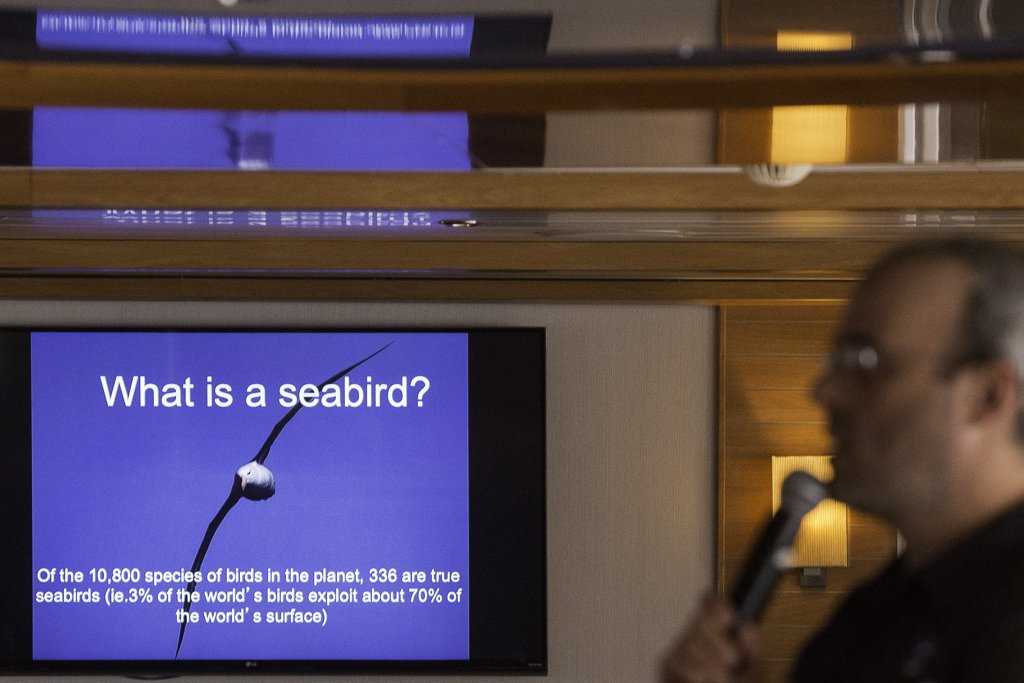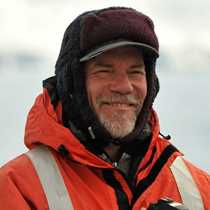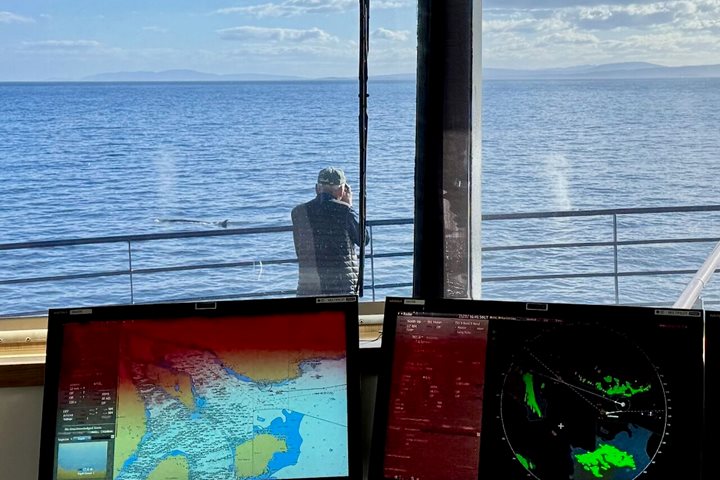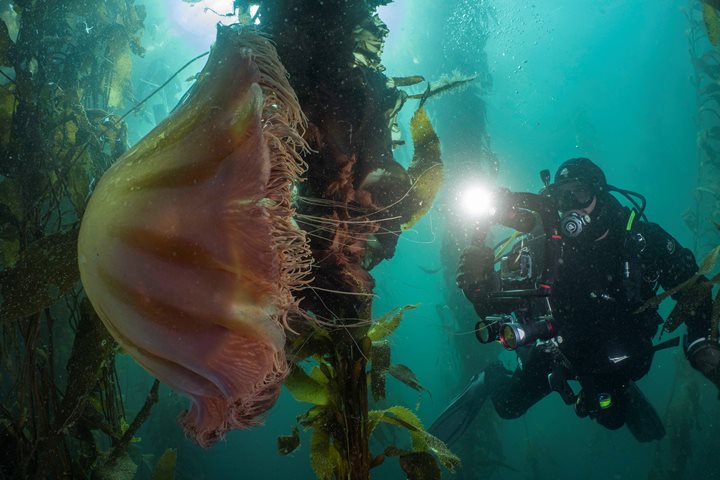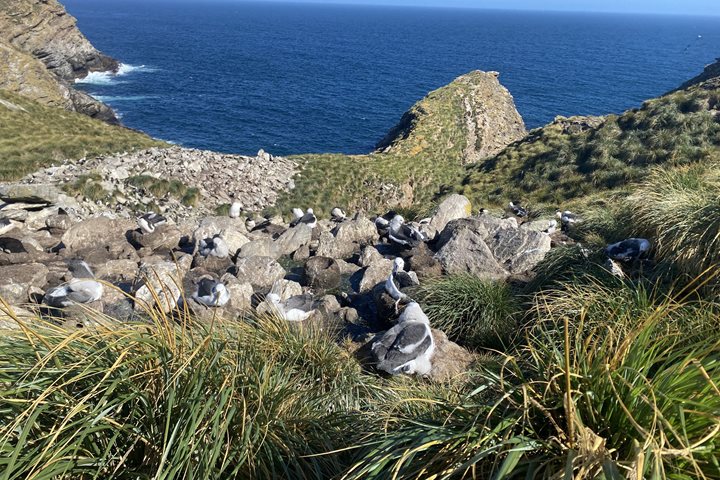Our crossing from Ushuaia to the Falkland Islands has been a perfect day for observing marine wildlife. Gentle winds and seas made spotting birds and whales easy and we had an excellent lecture from naturalist Santiago Imberti on the seabirds of the region, which helped us to identify them and understand their amazing lives. In addition to several species of birds, we also encountered two whales, a rare southern right whale and a lone bull sperm whale. It has been a great start to our expedition and only a taste of the fantastic wildlife to come!
- Daily Expedition Reports
- 10 Mar 2017
At Sea on the Falklands Shelf, 3/10/2017, National Geographic Explorer
- Aboard the National Geographic Explorer
- Antarctica
David Cothran, Naturalist/Certified Photo Instructor
David has worked for Lindblad Expeditions-National Geographic since 1993 on six continents and in over 65 countries. David is interested in many of the natural sciences, particularly ornithology, geology and marine biology; he most enjoys contrasting...
Read MoreShare Report
South Georgia and the Falklands
VIEW ITINERARYRelated Reports
3/14/2025
Read
National Geographic Resolution
New Island, Falkland Islands
Our final day of operations for the expedition (and the season) took place at New Island, one of the most beautiful islands in the Falkland Islands. Guests were amazed by the sheer cliffs of the outer coast, home to thousands of rockhopper penguins and even more black-browed albatross. While guests were ashore, the undersea team explored the underwater world of the Falkland Islands. We cruised through the amber forest of giant kelp and photographed the large sun stars but also some of the smaller denizens like tessellated patagonotothen fishes and beautiful purple-lined isopods. The highlight of the dive was one of the largest jellies either of us had seen. A gargantuan lion’s mane jelly was wrapped up in the kelp and its bell was almost 4 feet across. Truly a sight to behold and a favorite when shown to the guests at recap.
3/13/2025
Read
National Geographic Resolution
West Point Island
Our destination this afternoon remains my very favorite place in the Falklands. A warm welcome is always given by the caretakers of this lovely place, Theis and Kiki – Swedish and German respectively. They were at the end of their nine years here and we were among the last ships to visit this season. Of course, we visit the island because of the wildlife, and, after a nice forty-minute walk, we arrived at the Devil’s Nose albatross colony. Here, we found thousands of black-browed albatrosses living cheek by jowl with hundreds, if not thousands of rockhopper penguins. It is not always a happy marriage, but generally they get on, the albatross helping protect the penguin eggs and chicks from predation by the local Johnny rooks aka striated caracaras. A good walk deserves a fine afternoon tea, and we were treated to just that back at the farmhouse. In the garden, a yellow rose flowered beautifully overlooking the place where Lars Eric Lindblad’s ashes were scattered.

